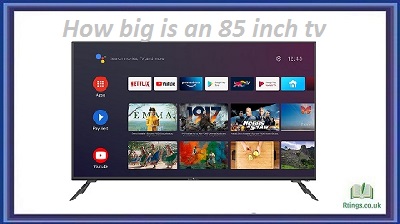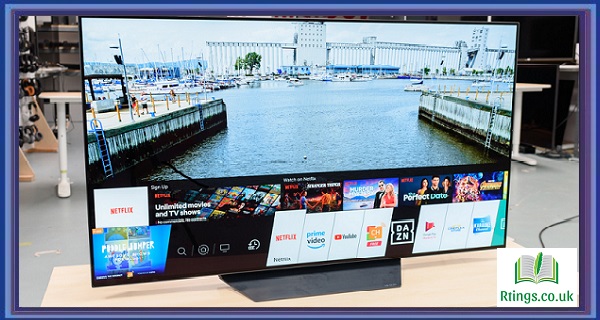Television sets, often called “TVs,” have become integral to our daily lives, offering entertainment, news, and information. These sophisticated devices have come a long way since their inception, evolving from bulky cathode-ray tube (CRT) models to sleek, high-definition screens. In this comprehensive exploration, we will delve into the intricate process of how TVs are made, from the initial design and manufacturing stages to the final product that graces our living rooms.
Introduction to Television Manufacturing
Before we dive into the intricate details of TV production, it’s essential to grasp the fundamentals of television manufacturing. This industry involves various stages, each contributing to the creation of a fully functional television set.
The Television Manufacturing Process
The television manufacturing process can be broadly categorized into the following stages:
Design and Conceptualization: This initial phase involves envisioning the TV’s features, specifications, and aesthetics. Designers, engineers, and product managers collaborate to create a concept that aligns with consumer needs and market trends.
Component Production: Products like screens, circuit boards, and plastics are manufactured separately. This stage involves advanced technologies, precision engineering, and quality control.
Assembly: Components are assembled into a complete television set. This step includes mounting the screen, attaching circuitry, and installing peripheral elements like speakers and ports.
Quality Control: Rigorous quality control measures are implemented throughout the assembly process to ensure that each TV meets specific standards and functions flawlessly.
Testing: TVs undergo a battery of tests to assess their performance, including picture quality, audio output, connectivity, and durability.
Packaging and Shipping: Once a TV passes all tests and quality checks, it is packaged and prepared for shipping to distributors, retailers, or directly to consumers.
Distribution and Sales: TVs are distributed to various outlets and sold to consumers in physical stores or online retailers.
Design and Conceptualization
The process of making a television begins with design and conceptualization. This stage is crucial as it establishes the TV’s features, appearance, and performance.
Market Research
Television manufacturers conduct extensive market research to identify consumer preferences, trends, and emerging technologies. This research informs decisions about the TV’s size, resolution, smart features, and more.
Design and Engineering
Designers and engineers collaborate to create a TV concept that aligns with market research findings. They consider factors such as aesthetics, screen size, display technology (e.g., OLED, LED, QLED), and smart capabilities.
Prototyping
Once the design is finalized, prototypes are created to test the TV’s physical appearance, functionality, and user experience. Feedback from these prototypes informs further refinements.
Component Production
The heart of any television lies in its components. Each component is meticulously crafted to meet specific standards and specifications.
Screen Manufacturing
The screen, often the most critical component of a TV, is manufactured separately. Depending on the type of TV (e.g., OLED, LED, QLED), different manufacturing processes are used:
OLED Screens: Organic Light Emitting Diode (OLED) screens involve the deposition of organic materials onto a substrate, creating self-emissive pixels.
LED and QLED Screens: LED (Light Emitting Diode) and Quantum Dot LED (QLED) screens use semiconductor materials to emit light when an electric current passes through them.
Circuit Board Production
The circuit boards, or the mainboards or motherboards, are manufactured separately. These boards contain the electronics that drive the TV, including the processor, memory, and input/output interfaces.
Plastic and Metal Components
The TV’s casing, bezels, stands, and other exterior components are typically plastic or metal. These components are produced through processes such as injection molding, metal casting, or extrusion.
Speaker Production
Speakers are an integral part of a TV’s audio system. Manufacturers produce speaker units that can deliver clear and high-quality sound.
Cable and Connector Production
Cables, connectors, and ports are produced separately to ensure compatibility with the TV’s design and specifications. HDMI, USB, Ethernet, and audio ports are among the standard connections on modern TVs.
Assembly
The assembly stage brings together the various components to create a functional TV set. This process involves precision and attention to detail.
Mounting the Screen
The screen is carefully mounted onto the TV’s frame, ensuring alignment and proper attachment.
Circuitry Integration
The circuit boards, including the mainboard and power supply board, are installed inside the TV’s housing. These boards are interconnected to facilitate communication and power distribution.
Speaker Installation
Speakers are strategically placed within the TV’s housing to achieve optimal audio quality. Some TVs, such as subwoofers or acoustic chambers, may have additional audio enhancements.
Peripheral Component Attachment
Other peripheral components, including buttons, infrared (IR) sensors, and indicator lights, are integrated into the TV’s design.
Quality Control
Quality control measures are implemented throughout the assembly process to check for defects, alignment issues, and proper component integration. Any discrepancies are addressed before proceeding.
Quality Control and Testing
Ensuring the quality and functionality of each TV is paramount to manufacturers. Rigorous testing procedures are in place to identify and rectify any issues.
Picture Quality Assessment
TVs undergo comprehensive picture quality tests to evaluate aspects such as brightness, contrast, color accuracy, and uniformity. Technicians use specialized equipment to fine-tune these parameters.
Audio Testing
The TV’s audio system is thoroughly tested to assess sound quality, volume levels, and the performance of additional audio features.
Connectivity Checks
The TV’s connectivity options, including HDMI ports, USB ports, Wi-Fi, and Bluetooth, are tested to ensure they function correctly.
Durability and Reliability Tests
TVs are subjected to stress tests to assess their durability. This may include temperature testing, vibration testing, and drop tests.
Software and Firmware Testing
Smart TVs undergo software and firmware testing to ensure all built-in apps, streaming services, and features function as intended. Updates and patches may be applied during this stage.
Packaging and Shipping
Once a TV successfully passes all quality control and testing procedures, it is prepared for packaging and shipping.
Packaging Design
The TV’s packaging is designed to protect during transportation while showcasing the product’s features and brand. The packaging includes foam inserts, protective covers, and user manuals.
Logistics and Distribution
TVs are shipped to distribution centres or directly to retailers. Manufacturers collaborate with logistics companies to coordinate shipping and delivery.
Retailer Placement
Retailers receive the TVs and place them on display in their stores. Online retailers also list TVs for sale on their websites.
Distribution and Sales
The distribution and sales phase marks the final stage of the television manufacturing process, where consumers purchase and use the products.
Retail Sales
Consumers can purchase TVs from physical retail stores, where they can examine the product before buying. Sales representatives may provide assistance and information.
Online Sales
Many consumers prefer to buy TVs online from e-commerce platforms and websites. Online purchases offer convenience and a wide range of options.
Consumer Use and Support
Once consumers acquire a TV, they set it up in their homes and begin using it. Manufacturers and retailers offer customer support and warranties to assist with any issues that may arise during use.
Ongoing Technological Advancements
The television Manufacturing industry is constantly evolving, driven by technological advancements and changing consumer demands.
Emerging Display Technologies
Manufacturers continually explore new display technologies, such as MicroLED and MiniLED, to improve picture quality, brightness, and energy efficiency.
Smart TV Features
Smart TVs are becoming increasingly sophisticated, with improved interfaces, voice recognition, and access to a wider range of streaming services and apps.
Connectivity and Integration
TVs are integrating seamlessly with other smart home devices, allowing users to control lighting, thermostats, and more from their TVs.
Sustainability and Recycling
Television manufacturers, as with all electronic devices, are becoming more focused on sustainability and recycling efforts.
Eco-Friendly Materials
Manufacturers are exploring eco-friendly materials in TV production, such as recycled plastics and sustainable packaging.
Recycling Programs
Many manufacturers offer recycling programs that encourage consumers to return old TVs for responsible disposal and recycling.
Conclusion
Making a television set is a complex and multifaceted journey involving design, component production, assembly, quality control, packaging, distribution, and sales. Each stage contributes to creating a high-quality TV that meets consumer expectations for performance, features, and durability.
As technology continues to advance, television manufacturing will evolve to incorporate new display technologies, smart features, and integration with the broader ecosystem of smart home devices. Sustainability and eco-friendly practices will also play a significant role in the future of TV production, aligning with global efforts to reduce electronic waste and minimize environmental impact.
Ultimately, the television industry’s ability to adapt to changing consumer preferences and emerging technologies will shape the future of how TVs are made and experienced by consumers worldwide.






